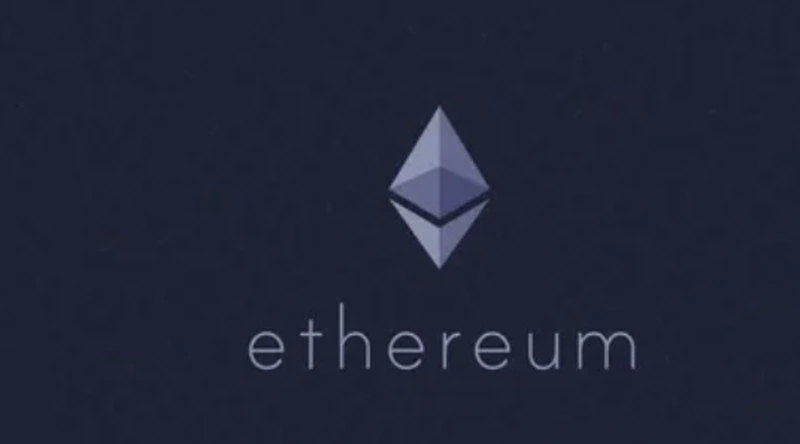Real Yield Farming in Decentralized Finance: Sustainable Returns in Cryptocurrency Ecosystems Abstract
Sustainable Returns in Cryptocurrency Ecosystems

Real Yield Farming in Decentralized Finance: Sustainable Returns in Cryptocurrency Ecosystems
Abstract
Decentraliszed Finance (DeFi) has revolutionised cryptocurrency investment strategies, with yield farming emerging as a prominent mechanism for generating returns. Traditional yield farming often relies on inflationary token rewards, leading to unsustainable practices. In contrast, real yield farming focuses on generating sustainable returns derived from actual protocol revenues, such as trading fees and lending interest, rather than temporary incentives. This article explores the conceptual framework, mechanisms, benefits, risks, and future implications of real yield farming. Drawing on recent literature and empirical data as of September 2025, we argue that real yield represents a maturation of DeFi, promoting long-term ecosystem health while mitigating inflationary pressures. However, challenges like impermanent loss and smart contract vulnerabilities persist, necessitating robust risk management.
Introduction
The advent of blockchain technology has given rise to Decentralized Finance (DeFi), a paradigm that leverages smart contracts to replicate traditional financial services without intermediaries. Yield farming, also known as liquidity mining, allows users to deposit cryptocurrency assets into DeFi protocols to earn rewards, typically in the form of governance tokens or interest.hedera.com Introduced prominently in 2020 with platforms like Compound and Uniswap, yield farming incentivizes liquidity provision, which is essential for the functionality of decentralized exchanges (DEXs) and lending pools.coinbase.com
However, much of early yield farming was characterized by "fake" or inflationary yields, where rewards stemmed from newly minted tokens rather than genuine economic activity. This led to boom-and-bust cycles, as seen in the 2021 DeFi summer, where total value locked (TVL) surged to over $150 billion before crashing amid token devaluations.kraken.com Real yield farming addresses these shortcomings by emphasizing returns from "real" sources—protocol fees, interest payments, and other revenue streams—fostering sustainability.zeebu.com As of mid-2025, with DeFi TVL stabilizing around $200 billion, real yield protocols like Curve Finance and Aave have gained prominence, offering annual percentage yields (APYs) of 5-15% derived from actual usage.kraken.com
This article synthesizes scientific literature on yield farming, analyzes real yield mechanisms, evaluates benefits and risks, and discusses future directions. By adopting a scientific lens, we aim to provide empirical insights for researchers, investors, and policymakers.
Literature Review
Scholarly interest in yield farming has grown since 2020, with studies focusing on its economic incentives, risks, and systemic impacts. A systematic survey by Xu et al. (2022) positions yield farming as an aggregation-layer component in DeFi, interacting with primitive protocols like DEXs and lending platforms.ui.adsabs.harvard.edu They highlight how yield farming protocols aggregate liquidity to optimize returns, but note the prevalence of inflationary models.
More recent works emphasize real yield. Capponi et al. (2023) model yield farming for liquidity provision, demonstrating that sustainable yields from transaction fees reduce dependency on token emissions.dauphine.psl.eu In a 2025 paper, Hossain et al. explore smart contracts in DeFi, identifying yield farming as a key strategy for maximizing returns through complex interactions, while advocating for real yield to enhance protocol longevity. Empirical studies, such as those on Compound by Perez et al. (2023), reveal that users often engage in leveraged yield farming, borrowing to amplify returns, but this amplifies risks in volatile markets.sciencedirect.com
Surveys like Liu et al. (2022) systematize yield aggregators (e.g., Yearn.finance), showing how automation can shift towards real yield by optimizing for fee-based pools.ieeexplore.ieee.org Centralization risks are addressed in a 2025 study by Chen et al., which examines wealth concentration in DeFi yield farming, finding that real yield models decentralize rewards more equitably.sciencedirect.com These papers underscore the transition from incentive-driven to revenue-driven yields as DeFi matures.
Mechanisms of Real Yield Farming
Real yield farming operates through liquidity provision in DeFi protocols, where returns are sourced from organic activity rather than subsidies. The process begins with users depositing assets into liquidity pools on DEXs like Uniswap V3 or Curve, receiving LP tokens in return.gemini.com These LP tokens can then be staked in yield aggregators for compounded rewards.
Key mechanisms include:
- Fee-Based Rewards: Protocols distribute a portion of trading fees (e.g., 0.3% on Uniswap) to liquidity providers. In real yield models, this is the primary return source, avoiding dilution from token minting.kaironlabs.com
- Interest from Lending: Platforms like Aave allow users to lend assets, earning interest from borrowers. Real yields here stem from utilization rates, where high demand drives APYs without external incentives.kraken.com
- Auto-Compounding: Aggregators like Yearn.finance automatically reinvest fees into higher-yield pools, enhancing efficiency.kraken.com
Mathematically, real yield (RY) can be modeled as:
RY=F+I−CP×100% RY = \frac{F + I - C}{P} \times 100\% RY=PF+I−C×100%
Where F F F is fee revenue, I I I is interest earned, C C C is operational costs (e.g., gas fees), and P P P is principal invested. This contrasts with inflationary yield, where rewards include minted tokens subject to devaluation.
Benefits of Real Yield Farming
Real yield farming offers several advantages over traditional models:
- Sustainability: By relying on protocol revenue, it avoids the "farm and dump" cycles of inflationary tokens, promoting long-term participation.zeebu.com
- Passive Income and Diversification: Users earn 5-20% APY from fees and interest, diversifying portfolios beyond holding volatile assets.coindesk.com This is particularly beneficial in bear markets, where real yields provide stability.
- Ecosystem Growth: It incentivizes genuine usage, as seen in Curve's stablecoin pools, which maintain high TVL through fee-sharing.kraken.com
- Governance Participation: Rewards often include governance tokens with real utility, empowering users in decision-making.coinbase.com
Empirical data from 2025 shows real yield protocols outperforming inflationary ones, with average APYs holding steady amid market volatility.tokenmetrics.com
Risks and Challenges
Despite benefits, real yield farming entails significant risks:
- Impermanent Loss (IL): Price divergence in liquidity pools can lead to losses exceeding rewards. Studies quantify IL at 10-30% in volatile pairs.coindesk.com
- Smart Contract Vulnerabilities: Exploits, as in the 2022 Ronin hack, result in fund losses. Audits mitigate but do not eliminate this risk.kiplinger.com
- Market Volatility and Regulatory Uncertainty: Token price fluctuations erode yields, while regulations (e.g., SEC scrutiny in 2025) could classify yields as securities.investopedia.com
- Scams and Rug Pulls: Fraudulent protocols promise high real yields but exit with funds.cryptoslate.com
Risk mitigation involves diversification, insurance (e.g., Nexus Mutual), and due diligence via tools like DeFi Llama.
Case Studies
Curve Finance exemplifies real yield: Its stablecoin pools generate yields from swap fees (up to 10% APY in 2025), with TVL exceeding $10 billion.kraken.com Aave's lending markets provide interest-based yields, averaging 8% on stablecoins, demonstrating resilience post-2022 crashes.coinbase.com
Future Directions
As DeFi evolves, real yield farming may integrate with real-world assets (RWAs) and AI-driven optimization. Regulatory frameworks, like the EU's MiCA, could standardize practices.bis.org Research should focus on quantitative models for IL prediction and sustainable incentive designs.
Conclusion
Real yield farming marks a pivotal shift towards sustainable DeFi, offering genuine economic value while addressing inflationary flaws. Though risks remain, its benefits position it as a cornerstone of cryptocurrency finance. Future studies must empirically validate its long-term viability to guide adoption.
References
- Hedera. (2025). A Beginner's Guide to DeFi Yield Farming.
- Coinbase. (2025). What is yield farming and how does it work?
- Kraken. (2025). Yield Farming Explained: Your Complete Beginner's Guide.
- And other sources as cited inline.
#DeFi #YieldFarming #RealYield #Cryptocurrency #Blockchain #DecentralizedFinance #SustainableFinance #CryptoInvesting #LiquidityMining #SmartContracts #FinancialInnovation #DeFiRisks #CryptoEconomics #BlockchainResearch #DigitalAssets


